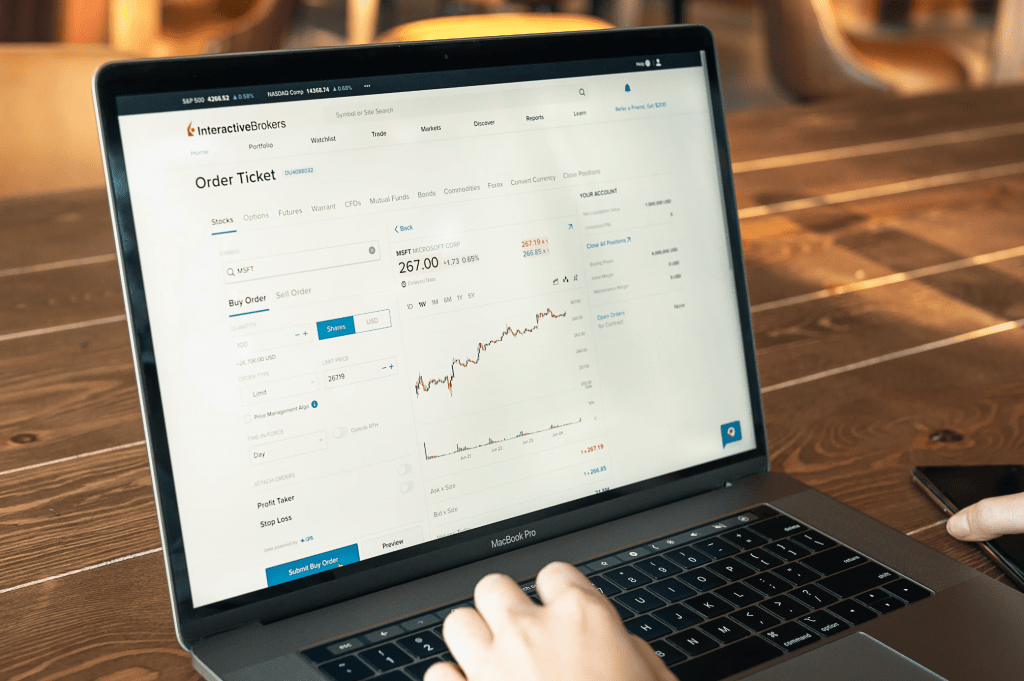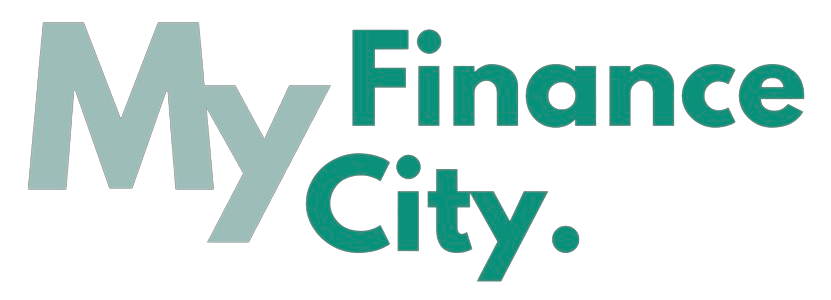Both Betterment and betterment have become two of the leading robo-advisors. They are also among the most innovative. Both B
You can’t really go wrong using either platform, even though they both have unique nuances and specializations. For a low fee, each will manage your entire portfolio. You will only be responsible for funding your account regularly when you choose to sign up for either service.
What if you are new to the robo-advisors, or if you want to switch over from another? When researching robo advisers, you will undoubtedly come across Betterment and Wealthfront. Let’s look at two of the biggest players in the robo-advisor space to see which one might work better for you. This article is available as a podcast.
The Betterment of Life
Improve Your Life
With $21 billion under management, Betterment was the first robo-advisor. It is located in New York City, and started operations in 2008.
Betterment, as a robo-advisor, is essentially an online platform for investment management that automates all the aspects. You will be asked to fill out a questionnaire when you register for Betterment. This helps determine your goals and time frame, as well as how risky you are willing to invest. Betterment uses this information to create a stock and bond portfolio that meets your investment profile.
Exchange-traded fund (ETF) investments are made instead of individual securities. Each ETF represents a different asset class. You can create an entire portfolio through a few dozen funds, which will expose you to all global financial markets.
This is all done at a very low management fee. You will only be responsible for funding your account regularly and letting Betterment manage all of the details.

Better Business Bureau has rated Betterment A+. This is the highest possible rating on a scale from A+-F. More than 20,000 customers have given the company 4.8 out of five stars on Apple’s App Store and more than 4,500 on Google Play.
Wealthfront
Wealthfront, along with Betterment is the primary rival of Betterment. With over $24 Billion in assets, Wealthfront is now larger than Betterment. Redwood City is the company’s headquarters. It launched in 2011.
It works in a similar way to Betterment as a robo-advisor, generating a portfolio based on the answers you provide when opening your account. Wealthfront can also use a few ETFs to manage your account. These are spread out across different asset classes. On larger accounts they will also include individual stocks in order to maximize the tax loss harvesting.
Wealthfront’s investment strategy, like that of Betterment or virtually any robo-advisors, is based upon Modern Portfolio Theory. This emphasizes the importance of asset allocation rather than individual stock selection.
Your account, like Betterment and all other robo-advisors, will be managed by a full team of investment professionals for an annual fee that is very affordable. You will only be responsible for funding your account regularly.
Wealthfront is rated F by the Better Business Bureau due to complaints that have not been addressed. The company has received 4.9 out of five stars from over 9,000 App Store users and 4.8 out of five stars by more than 2700 Google Play users.

Wealthfront vs Betterment: Investment Strategies
Betterment Investment Strategy
There are two plans available: Digital and Premium. Digital and Premium are available to anyone with a minimum balance of $100,000. Betterment, like many other robo-advisors, has moved beyond building and managing basic portfolios comprised of an assortment of stocks and bond.
If you select the Premium Plan you will have live access to financial advisors. There are also many options for services and plans.
Basic portfolio mix
You can invest in up to six asset classes (stocks/ETFs) and eight asset classes (bonds/ETFs) for your portfolio.
Stocks:
- US Total Stock Market
- US Value Stocks, Large Cap
- US Value Stocks, Mid Cap
- US Value Small Cap Stocks
- International Developed Markets stocks
- International Emerging Markets Stocks
Bonds:
- US High-Quality Bonds
- US Municipal Bonds
- US Inflation-Protected Bonds
- US High Yield Corporate Bonds
- US Short-term Treasury Bonds
- US Short-Term Investment Grade Bonds
- International Developed Markets Bonds
- International Emerging Markets Bonds
Value stocks
Three of the six asset classes are value stocks. Betterment has a long-standing investment strategy that is represented by this specialization. Investments in value stocks involve investing in firms whose stock prices are lower than their competitors, based on various standards. The companies, however, are considered to be sound and will likely outperform other markets once investors realize the real value of their stocks.
Betterment tries to beat the market in this manner, by outperforming the S&P 500, or other indices.

Smart Beta
Betterment has another strategy that can outperform other investment strategies. Goldman Sachs manages this specific portfolio. Smart Beta, a type of active portfolio, is designed to find high-quality, low-volatility companies that have strong momentum and are good values.
It requires $100,000 as a minimum because it is a high-risk/high-reward type of investment.
SRI (Socially Responsible Investing)
Robo advisors are increasingly offering this option. Betterment will only invest a small portion of your overall portfolio in SRI. The ETFs for International Emerging Market Stocks (IEMS) and US Value Stocks, Large Cap are replaced by ETFs that focus on socially responsible investments in these sectors.
Find out more about the pros and cons of socially responsible investing
Flexible Portfolios
This option is for you if you would like to have more control of your portfolio. You can adjust your asset allocation by adjusting the weight of each class. This tool is also for advanced investors, and allows you to boost allocations to asset classes that you think will outperform.
BlackRock Income
Betterment’s 100% bond portfolio is designed for investors who are looking to earn income while maintaining the safety of their principal. This portfolio does carry some principal risk, but the level is designed to be low. Even the risk level and desired return can be chosen. You won’t get the long-term returns you would from an investment portfolio but this will provide a steady income for retirees.
Tax-loss Harvesting
Tax-loss-harvesting is an end-of-year strategy whereby asset classes that have losses are sold and replaced by comparable asset classes to counterbalance gains on asset classes which perform well. This strategy can help to delay capital gains tax on asset classes that are growing.
This strategy is available for all Betterment account balances. It is only available on taxable account balances, as it would be completely useless for retirement plans that are tax-sheltered.
The Betterment Everyday Reserve
Betterment Cash Reserve is a great way to include a cash investment option in your portfolio. FDIC Insurance is available up to $1,000,000. Minimum deposit of $10 and unlimited transfers are available.
Improved Checking
You can manage your finances in the best way possible with Betterment Checking. This account comes with a debit-card that you can use to make payments in person, or even online. Your money is also insured by the FDIC.
It’s a new way of managing your finances. The account is faster and more secure. There are no minimum balance requirements. Now you can deposit checks with their mobile app. Take a photo and the deposit check will appear on your other side.
Wealthfront Investment Strategy
Wealthfront, unlike Betterment has one plan that is available to all investors. The annual fee for managing the account, which includes all balances, is 0.25%. Like Betterment, Wealthfront offers a wide range of investment options.
Basic Portfolio Mix
Wealthfront’s portfolios are constructed using 11 asset classes, which includes four stocks funds, five bonds funds, real estate, and natural resources.
The Wealthfront Risk Parity
Investors with large accounts who are willing to take on more risk can use this strategy. This strategy has been proven to produce higher returns over the long term, and may even use leverage in order to boost those returns.
Stock-level Tax-loss Harvesting
All taxable accounts can harvest tax losses. Larger accounts can take advantage of Stock-Level Tax-loss harvesting to defer taxes more aggressively.
It is an investment strategy that can be quite complex, but involves using individual stocks in order to maximize tax losses. Individual stocks make it easy to purchase and sell securities in order to reduce capital gains tax. The minimum required investment depends on the plan. It can range from $100,000 to $500,000.
Wealthfront Path
It is an online financial advisor that provides you with tools for financial planning. You can use them to plan your retirement, save for a downpayment on a home or pay for college for you or one of your kids. These apps can run “what-if” scenarios that make projections for your goals based on different savings amounts.
The service is completely free, even though it does not offer real-time financial advice.
Richfront Cash
Open a Wealthfront Cash account for just $1 to earn interest. No market risks, no fees and unlimited transfers are included. Your account is FDIC-insured up to $5,000,000.
Wealthfront Cash now allows you to receive your pay up to 2 days earlier when you setup a direct deposit. Wealthfront Cash has also enabled you to make investments directly from your account within minutes. This allows you to get paid earlier and invest immediately, giving you an extra day of investment each year.

Wealthfront Portfolio line of credit
The Wealthfront Portfolio line of credit is similar to a home equity loan, as it’s secured by the value of your account. The value of your investment account can be used to borrow as much as 30%. The line of credit does not require any prequalification because it is secured entirely by the value of your account.
If you hold a balance in your non-retirement accounts of $25,000. The credit line is automatically opened. On your smartphone, you can ask for funds from the credit line and get them as soon as the next business day.
The current interest rate paid for the credit line is between 2.45% APR and 3.70%, depending on your account size.
Wealthfront vs. Retirement Planning Betterment
The management of retirement funds is one of the main uses for robo-advisors. Betterment and Wealthfront both offer the same management of IRAs as they do for taxable accounts. Each also provides some retirement planning.
Best Robo Advisors: Find the one that best suits your needs.
Plan Your Retirement Better
In this area, Betterment has a strong position because, in addition to the regular portfolios they offer, there are also income-specific options like BlackRock Target Cash and Everyday cash Reserve. Target Income is a great option because it focuses on increasing interest income. This is what many retirees are after in their retirement.
Betterment allows you to connect your 401k with your account. Betterment cannot manage your 401(k), unless your employer chooses to do this through their 401 (k) plan management. However, they can help you coordinate the activities in your Betterment retirement accounts with those of your employer’s plan.
If you’ve got at least $100,000 on your account with Betterment, you are eligible to enroll in Premium and get access to financial advisors.
Betterment offers its Retirement Savings Calculator as well to let you know whether you are on the right track towards retirement. Answering just four simple questions will allow them to calculate if you current retirement plan is going to provide enough income for your retirement. They’ll also take into account your projected Social Security Income. It will tell you how much you should invest more regularly if it is not.
Wealthfront Retirement Plan
Wealthfront Path can help with your retirement planning. To begin, you’ll need to link your accounts with the software so it can better understand your finances. The program will make recommendations to reach your retirement goals based on how much you contribute regularly and what income you need.
Path analyzes your savings patterns, interest rates, and contributions to retirement accounts, investment, and investments. The program will analyze your fees on investment and retirement account. The analysis includes loan accounts.
Information is gathered and projections made. Advice will be provided on how to increase your retirement savings and asset allocation. The service will also provide you with regular updates about your progress towards your retirement goals, as all of your accounts are connected to it.
Betterment Pros & Cons
There is no minimum investment requirement or required balance on the account.
Fees are reduced for larger balances.
Value stocks are used to try and outperform other markets.
Access to Certified Financial Planners is unlimited for all accounts over $100,000.
Comprehensive retirement planning package.
Diversification of investments limited to alternative asset classes such as real estate, natural resources, and other assets.
If you choose the Premium Plan, your annual management fee will increase from 0.25% up to 0.40%.
Fees on high-value accounts are reduced only when you have a balance of at least $2 million.
Wealthfront Pros & Cons
You can invest in alternative assets, such as real estate or natural resources. It is a more diverse portfolio than one that only invests in bonds and stocks.
Minimum initial investment of $500. It’s still not zero but is a comfortable amount for most investors to start.
All balances are subject to a flat-rate of 0.25%.
With Wealthfront Risk Parity, larger accounts can benefit from more effective tax loss harvesting strategies.
You can borrow as much as 30% of the non-retirement account value at very low rates of interest, and without a credit check.
No reduced fee is charged for higher account balances.
It is not possible to get advice directly from a financial advisor using the retirement planning tool.
The Better Business Bureau has given a poor rating.













+ There are no comments
Add yours